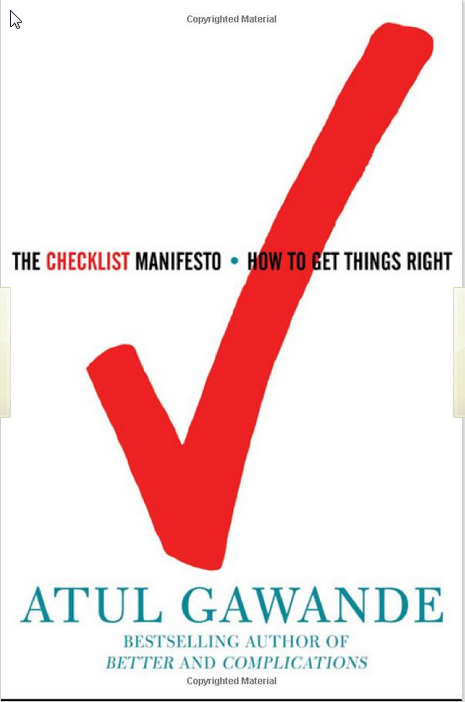 Checklists have been routinely used to improve safety in aviation since 1937.
Checklists have been routinely used to improve safety in aviation since 1937.
The building industry uses checklists to ensure major projects run to schedule and are safe.
So why don’t we use checklists more in medicine?
This is the question asked by the American surgeon and columnist, Atul Gawande, author of ‘Better’, ( where to buy Indocin treatment of bipolar disorder previously reviewed)
A number of studies have shown the effectiveness of checklists in improving surgical outcomes. The most famous of these is the work of Peter Provonos. The Keystone Initiative in Michigan reduced central line infection rates by 66% – in 18 months saving $175 million and more than fifteen hundred lives. As Atul Gawande says, ‘all because of a stupid little checklist’.
‘Under conditions of complexity, not only are checklists a help, they are required for success. There must always be room for judgement, but judgemnent aided and enhanced by procedure’
The answer would appear to be that we should use checklists more – if we want to get things right.
There is a definite art in designing effective clinical checklists. When well done, the results can be extraordinarliy successful in improving safety and quality.
We’ll start a checklist sharing service here at practiceimprovement.com.au.
Send us your thoughts through the comments below.

